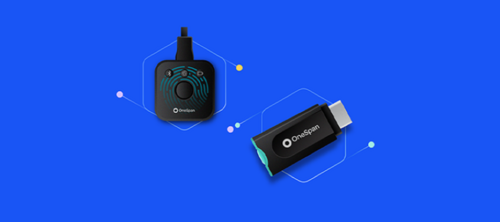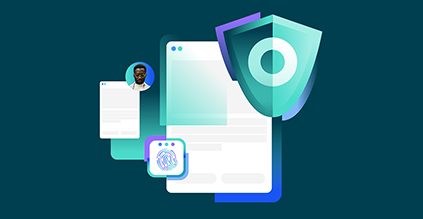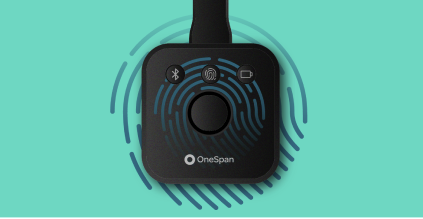OneSpan Sign How To: Authentification Des signataires

Lors de la création d'un nouveau package de documents, la méthode d'authentification par défaut se fait par e-mail. Le signataire reçoit un e-mail de OneSpan Sign qui contient un lien vers le paquet de documents. Le signataire est automatiquement authentifié en cliquant sur le lien. Des sécurités supplémentaires peuvent être ajoutées pour vérifier l'identité du signataire. Un signataire peut être authentifié par :
Une série de questions auxquelles il faut répondre (Q-A)
Un code numérique envoyé par SMS
- Authentification basée sur le savoir (KBA)
Avec la question, le signataire doit répondre à une série de questions afin d'avoir accès à la trousse de documents. Si l'authentification PAR SMS est choisie, un code d'accès est envoyé au numéro de téléphone mobile du signataire qu'il doit entrer avant de poursuivre le processus de signature. Enfin, un signataire peut également être authentifié par l'authentification basée sur la connaissance. KBA exige la connaissance des renseignements personnels d'une personne pour accorder l'accès à des documents protégés. OneSpan Sign prend actuellement en charge Equifax US et Equifax CA. À la réception du colis, le signataire recevra une série de questions relatives à son dossier de crédit personnel. Pour activer l'authentification basée sur les connaissances, veuillez contacter notre équipe de support à @e-signlivesupport .com. Dans ce blog, je vais vous montrer comment authentifier les signataires en utilisant le OneSpan Sign Java SDK, .NET SDK, et REST API.
Le code
Vous pouvez aller de l'avant et passer à la section qui s'applique à vous. Je vais couvrir exactement les mêmes informations dans chaque section. Code d'exemple complet pour ce blog peut être trouvé dans le Developer Community Code Share (Java, .NET, REST).
JAVA SDK
Tout d'abord, je vais commencer par le Java SDK. La création et l'envoi d'un paquet a été couvert dans un blogprécédent . Le code ci-dessous vous montre comment modifier le bloc de signataire pour chaque méthode d'authentification de signataire.
.withSigner( newSignerWithEmail( "[email protected]" )
.withFirstName ( "First" ) )
.withLastName ( "Signer" )
.challengedWithQuestions( ChallengeBuilder.firstQuestion( "Quel est votre sport préféré?" )
.réponse ( "soccer" )
.secondQuestion ( "Quel instrument de musique jouez-vous?" )
.réponse ( "batterie" ) ) ) ) ) )
.withSigner( newSignerWithEmail( "[email protected]" )
.withFirstName ( "Deuxième" )
.withLastName ( "Signer" )
.withSmsSentTo ( "1234567890" ) )
Vous pouvez également authentifier un signataire avec KBA. De même, vous pouvez modifier le bloc de signataire pour implémenter KBA. Le champ "withTimeAtAddress" peut être laissé vide.
.withSigner(newSignerWithEmail("[email protected]")
.avecFirstName ("John")
.avecLastName ("Doe")
.challengedWithKnowledgeBasedAuthentication(newSignerInformationForEquifaxUSA))
.avecFirstName ("John")
.avecLastName ("Doe")
.avecStreetAddress ("2020 Broadway Street")
.avecCity ("New York")
.avecZip ("12345")
.avecL'Etat ("NY")
.avecSocialSecurityNumber ("123456789")
.withDateOfBirth (nouveau DateTime().moinsYears(15).toDate())
.withHomePhoneNumber ("1234567890")
.withDriversLicenseNumber("1234567890")
.withTimeAtAddress(32)))SDK .NET
Ensuite, je vais continuer avec le .NET SDK. La création et l'envoi d'un paquet a été couvert dans un blogprécédent . Le code ci-dessous vous montre comment modifier le bloc de signataire pour chaque méthode d'authentification de signataire.
. WithSigner(SignerBuilder.NewSignerWithEmail("[email protected]")
. WithFirstName (« Première »)
. WithLastName ("Signer")
. ChallengedWithQuestions(ChallengeBuilder.FirstQuestion("Quel est votre sport préféré?")
. Réponse ("golf")
. SecondQuestion ("Quel instrument de musique jouez-vous?")
. Réponse ("batterie")))
. WithSigner(SignerBuilder.NewSignerWithEmail("[email protected]")
. WithFirstName ("Deuxième")
. WithLastName ("Signer")
. WithSMSSentto ("1234567890"))
Vous pouvez également authentifier un signataire avec KBA. De même, vous pouvez modifier le bloc de signataire pour implémenter KBA. Le champ "withTimeAtAddress" peut être laissé vide.
. WithSigner(SignerBuilder.NewSignerWithEmail("[email protected]")
. WithFirstName (" John ")
. WithLastName ("Smith")
. ChallengedWithKnowledgeBasedAuthentication(
SignerInformationForEquifaxUSABuilder.newSignerInformationForEquifaxUSA(E)
. WithFirstName (" John ")
. WithLastName ("Doe")
. WithStreetAddress ("2020 Broadway Street")
. WithCity ("New York")
. WithState ("NY")
. WithZip ("12345")
. WithSocialSecurityNumber ("123456789")
. WithHomePhoneNumber ("1234567890")
. WithDateOfBirth (nouveau DateTime(2002, 2, 2))
. WithDriversLicenseNumber ("1234567890")
. WithTimeAtAddress(32)
API REST
Enfin, je vais vous montrer comment à cela avec l'API REST. La création et l'envoi d'un paquet a été couvert dans un blogprécédent . L'exemple de chaînes JSON ci-dessous vous montre comment modifier l'objet "auth" pour chaque méthode d'authentification.
QUESTIONS :
{
"auth":
"défis":[
{
"question": "Quel est votre sport préféré?",
"réponse": "golf",
"maskInput": faux
}
],
"scheme":"CHALLENGE"
}
Sms:
{
"auth":
"défis":[
{
"question": "1234567890"
}
],
"scheme":"SMS"
}
Vous pouvez également authentifier un signataire avec KBA. De même, la chaîne JSON de l'échantillon ci-dessous vous montre comment modifier l'objet "signataires" avec KBA. Le champ "withTimeAtAddress" peut être laissé vide.
{
"signataires":[
{
"livraison":
"email":faux
},
"email":"[email protected]",
"firstName":"John",
"lastName":"Doe",
"auth":
"scheme":"NONE",
"défis":[
]
},
"KnowledgeBasedAuthentication":
"signerInformationForEquifaxUSA":
"firstName":"John",
"lastName":"Doe",
"streetAddress":"2020 Broadway Street",
"ville":"New York",
"zip":"12345",
"État":"NY",
"timeAtAddress":5,
"driversLicenseNumber":"1234567890",
"dateOfBirth":"1969-12-09T00:00:00Z",
"SocialSecurityNumber":"123456789",
"HomePhoneNumber":"1234567890"
}
}
}
],
"reassign":faux,
"emailMessage":
"contenu":""
},
"attachmentRequirements":[
]
}
Le résultat
Allez-y et exécutez votre code. Si vous avez choisi d'authentifier un signataire avec des questions-réponses ou des SMS, le signataire sera redirigé vers les pages suivantes :
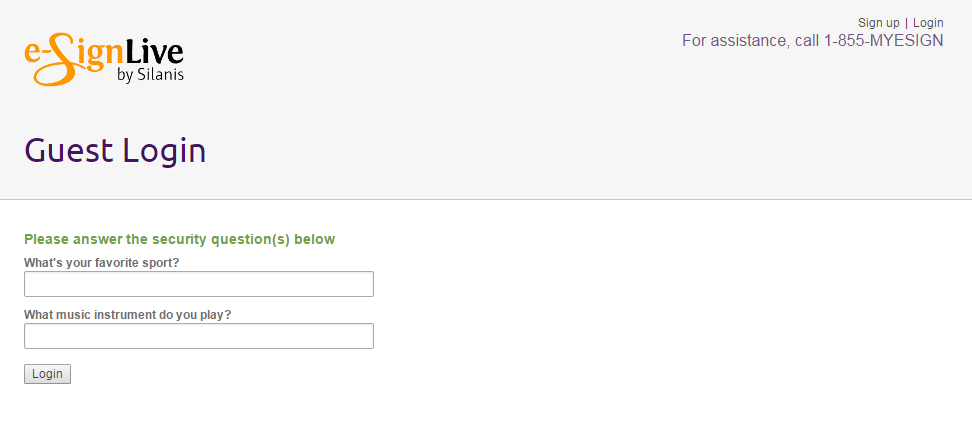

Avec Knowledge Based Authentication, le signataire se verra poser une série de questions concernant son dossier de crédit personnel pour vérifier son identité.
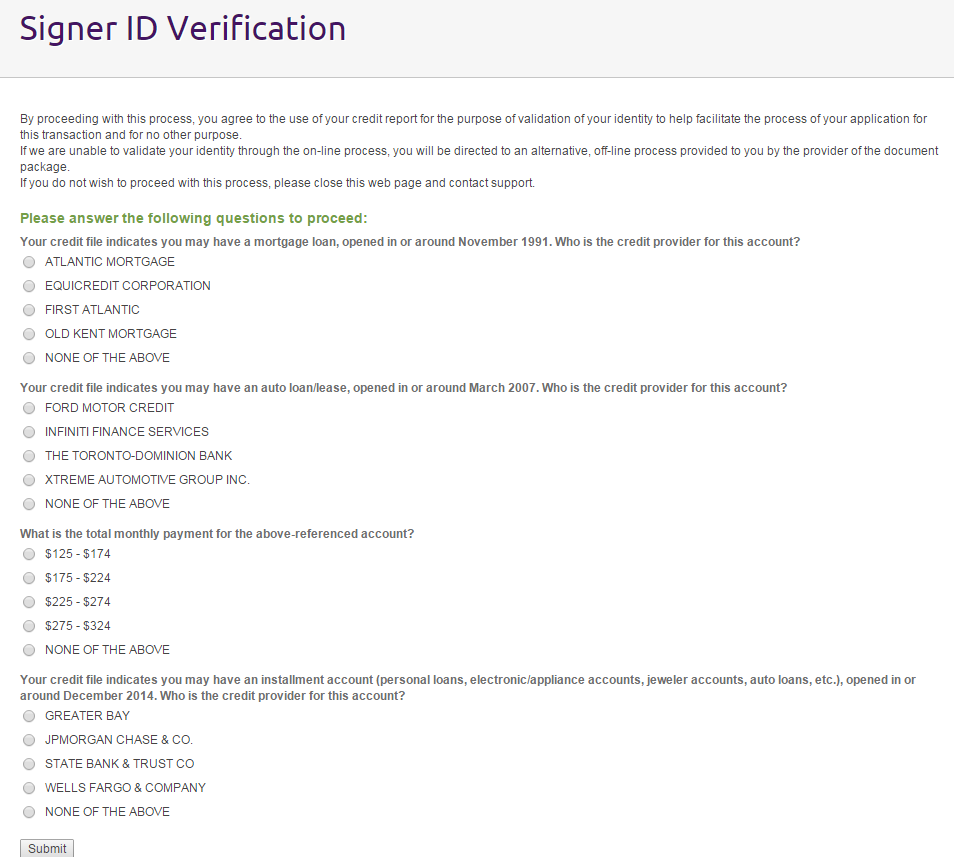
Et voilà. Vous avez créé avec succès un nouveau package avec des méthodes d'authentification supplémentaires.
Si vous avez des questions concernant ce blog ou toute autre chose concernant l'intégration de OneSpan Sign dans votre application, visitez les forums de la communauté des développeurs:
https://developer.onespan.com. C'est moi qui l'ai fait. Merci de lire! Si vous avez trouvé ce message utile, s'il vous plaît le partager sur Facebook, Twitter, ou LinkedIn.
Haris Haidary
Évangéliste de produit technique junior
LinkedIn - France Twitter (en)
